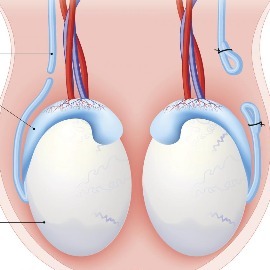
Vasovasostomy is a surgical procedure to restore fertility in men who have previously undergone a vasectomy (severing of the vas deferens). In this surgery, the cut ends of the vas deferens (the tubes that carry sperm from the testicles to the urethra) are reconnected, allowing sperm to properly pass from the testicles and into the semen. This surgery is considered a microsurgical technique and is performed with the aid of a microscope.
Indications for Vasovasostomy
Restoring fertility after vasectomy Treating vas deferens obstruction due to injury or infection Obstructive azoospermia (absence of sperm in semen due to blockage) Desire to have children after vasectomy due to changes in marital status or personal desire Limited success with other fertility treatments (such as IVF) Steps of Vasectomy Reversal (Vasovasostomy)
Anesthesia: The patient is given local or general anesthesia. Scrotal Incision: A small incision is made in the scrotum. Identification of Severed Vas Deferens: The cut ends of the vas deferens are located. Assessment for Sperm in Vas Deferens: Fluid from the vas deferens is examined for the presence of sperm. Microsurgical Reconnection: The ends of the vas deferens tubes are precisely reconnected using microsurgical techniques. Closure: The incisions are closed, completing the surgery. Recovery Period and Post-operative Care
Sperm typically reappears in the semen within a few months after surgery, and fertility may gradually be restored. However, the success of the surgery depends on factors such as the time elapsed since the vasectomy and the surgeon's skill.
What is the success rate of this rejoining of the tubes, or vasovasostomy?
The success rate of vasovasostomy (vasectomy reversal) depends on several factors, including the time since the vasectomy, the surgeon's skill, and the individual's overall health. The success of this surgery is assessed from two perspectives:
Return of Sperm to Semen:
Less than 10 years since vasectomy: The rate of sperm returning to the semen is approximately 95% or higher. More than 10 years since vasectomy: This rate decreases to between 70% and 85%. Fertility (Pregnancy):
Less than 10 years since vasectomy: The pregnancy rate of the partner is around 50% to 60%. More than 10 years since vasectomy: This rate decreases to between 30% and 40%.
Factors Affecting Success:
Time elapsed since vasectomy: The shorter the time since the vasectomy, the higher the likelihood of success. Quality of sperm fluid: The presence of healthy sperm in the vas deferens significantly impacts the outcome. Surgeon's experience and skill: This surgery requires high precision, and more experienced surgeons typically achieve better results.